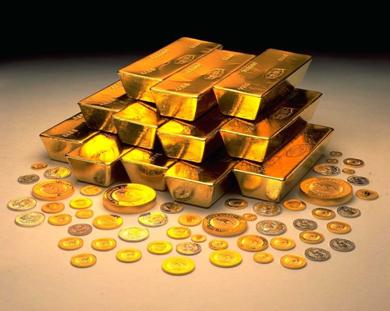When people think of retirement investments, gold rarely crosses their minds. After all, gold doesn’t provide any income, and the whole purpose of saving for retirement is to replace the income shortfall when you’re not working any more.
To be sure, gold makes little sense for those who are already retired, and are seeking an investment that will generate income for day-to-day living. Future retirees, however, are less interested in current income than in growth and security of their retirement nest egg. For them, gold can be a part of a comprehensive retirement saving strategy.
A hedge against inflation
The best feature of gold is that it has proven itself to be a very effective hedge against inflation. Its price may fluctuate. But over time, gold’s value stays remarkably constant. In fact, gold is one of the few investments that actually increase in real value when inflation is high. This is because it becomes especially attractive when inflation heats up. As investors rush to exchange cash for hard assets, they drive up gold’s price even faster than cash is depreciating. So gold investors are often among the very few who make a tidy profit when everyone else is watching their investments shrivel.
Tax considerations
When it comes to taxes, gold can be a bit tricky. The tax code generally favors capital gains (the money you make when you sell something for more than you paid for it) over current income like wages and interest (dividends enjoy special treatment). But unfortunately, “collectibles” such as artwork, antiques, stamps, coins—and gold— do not enjoy the same capital gains tax breaks as stocks, bonds, and real estate. Capital gains taxes on gold can therefore be as high as 28%, almost double the rate levied on securities.
There is, however, one way to mitigate this effect. If you have a self-directed IRA, you may include among your IRA investments gold bullion (it must be at least 99.5% pure and most bullion is), or American Eagle gold coins. When you sell the gold and keep the proceeds in your IRA, you will not pay any capital gains tax. Of course, IRA withdrawals are subject to income tax, but this is true regardless of the source of funds, whether capital gains, interest, or dividends. This is perhaps the best way to shelter inflation-busting gains from gold against taxes.
How to buy gold
If you decide to use gold as an investment strategy, it’s essential to buy from a reputable dealer where mark-ups are minimal; otherwise the spread between the buy and sell price can eat up your profits.
Research multiple gold dealers online. Also, check with local coin shops. To find out the spread, simply ask how much over “spot” the dealer charges for American Eagles. This is essentially the markup over the current or “spot” gold price. Then go with the least markup.
If you’re not interested in holding the physical gold, you can also invest in gold ETFs, or exchange traded funds. The most popular one is SPDR Gold Shares with a ticker symbol of GLD. If you have a brokerage account, you can buy and sell this fund as you would any other common stock. The fund contains physical gold and gold derivatives, and is designed to track the price of 1/10 of an ounce of gold. You can hold SPDR Gold Shares in a self-directed IRA if you wish.
So if you’re worried about inflation—and anyone whose retirement is several years away should be—it makes sense to have at least a small portion of your retirement savings in gold. When you’re ready to retire, you can then sell it, and convert it to income-producing investments. This will give you the best of both worlds.
